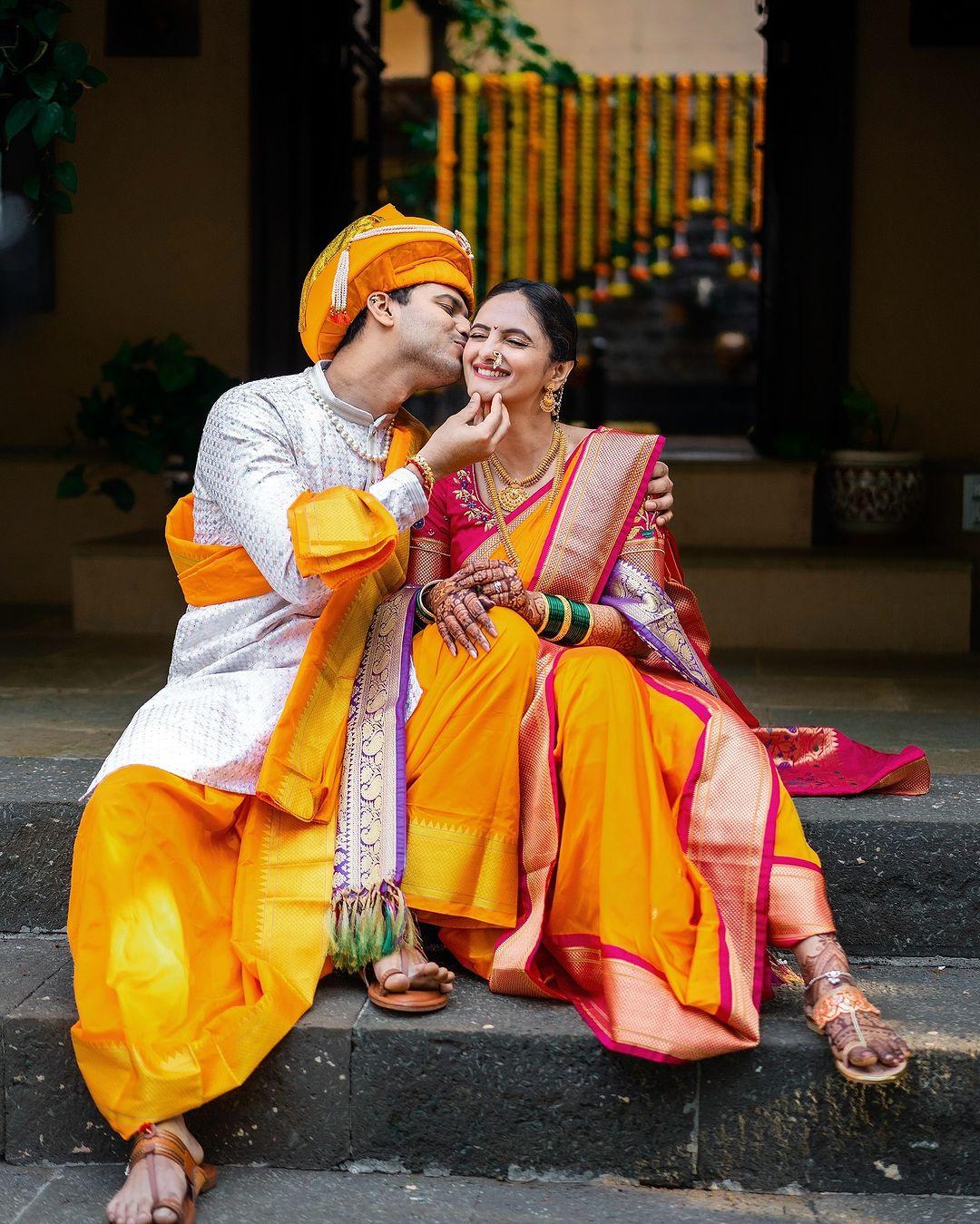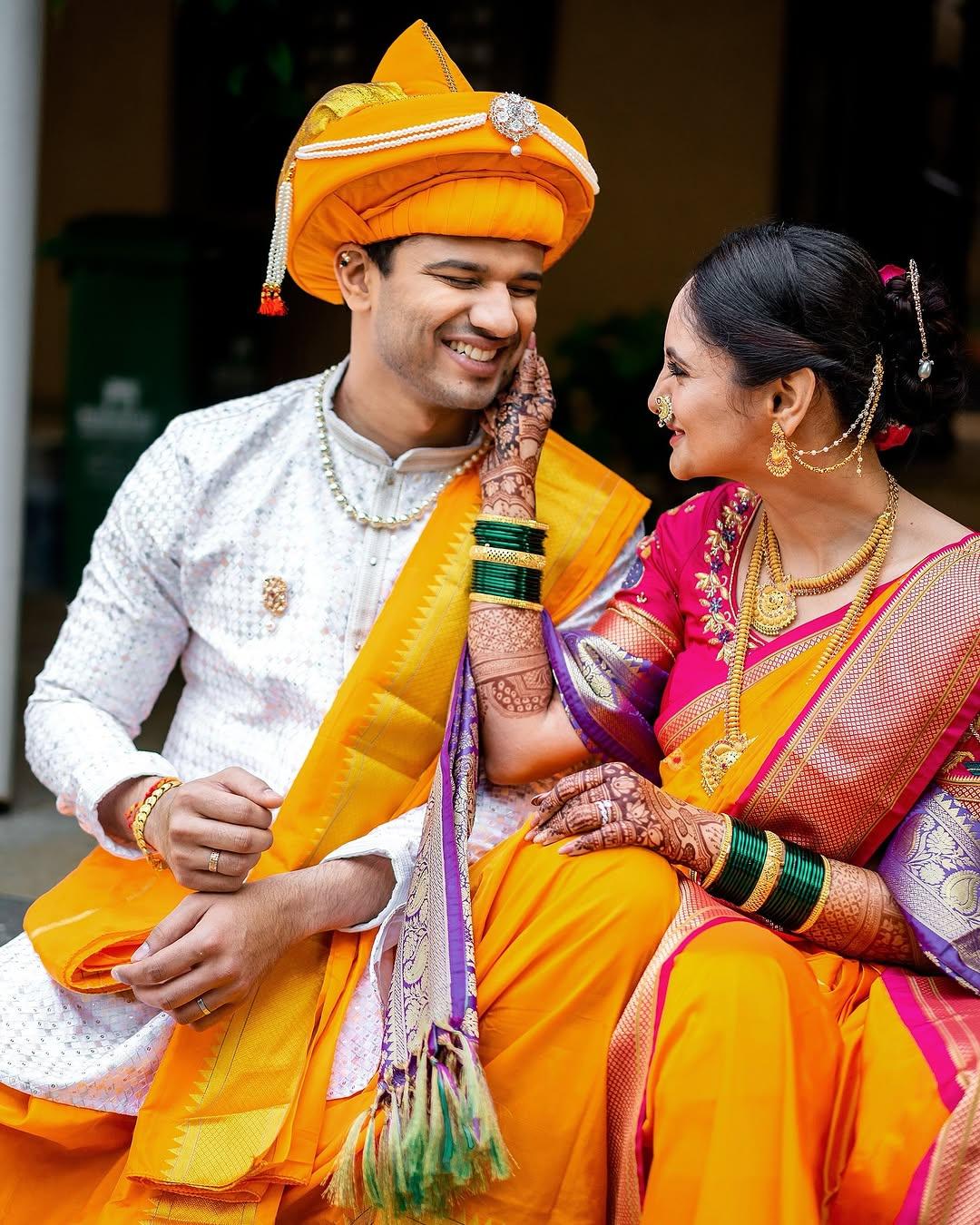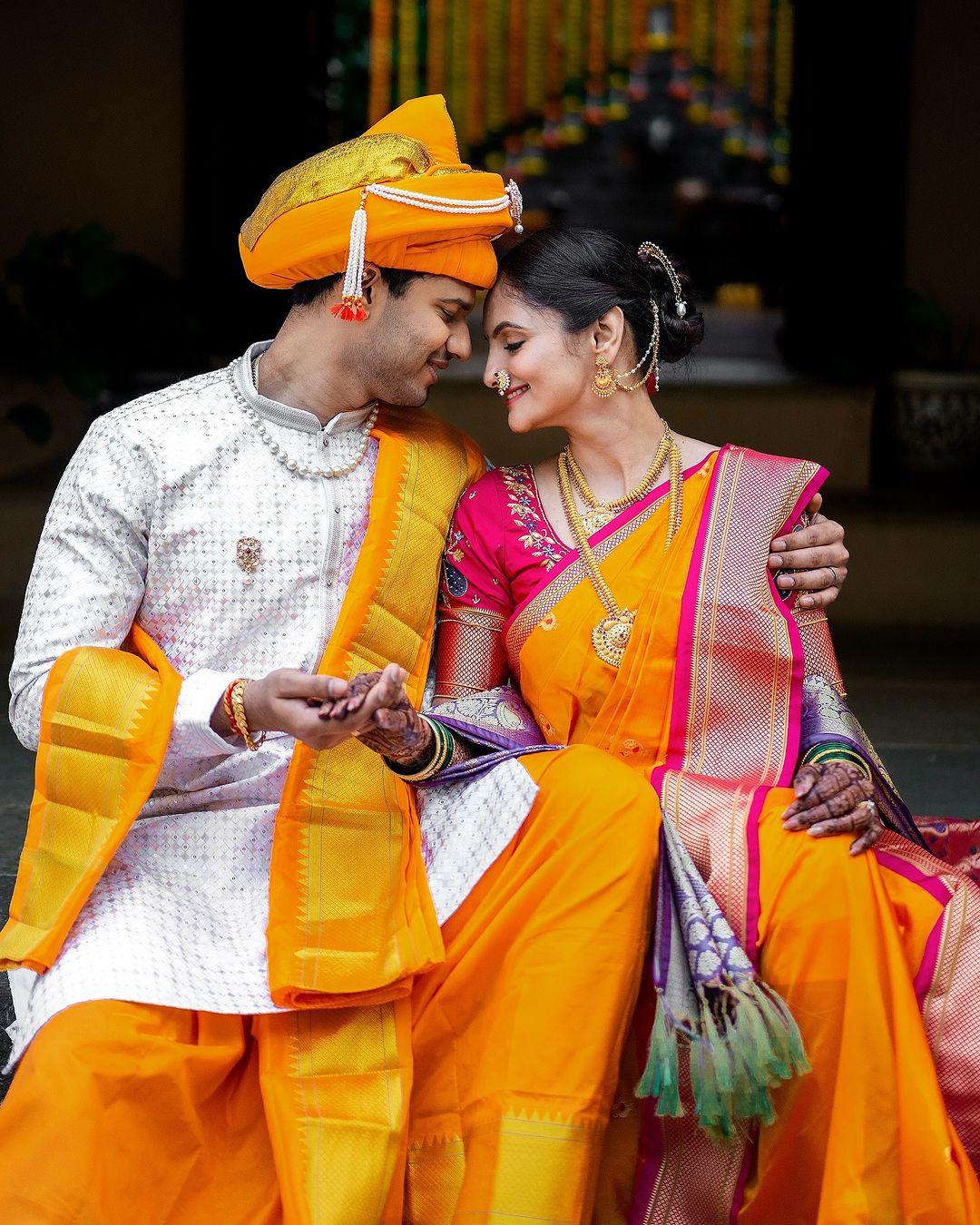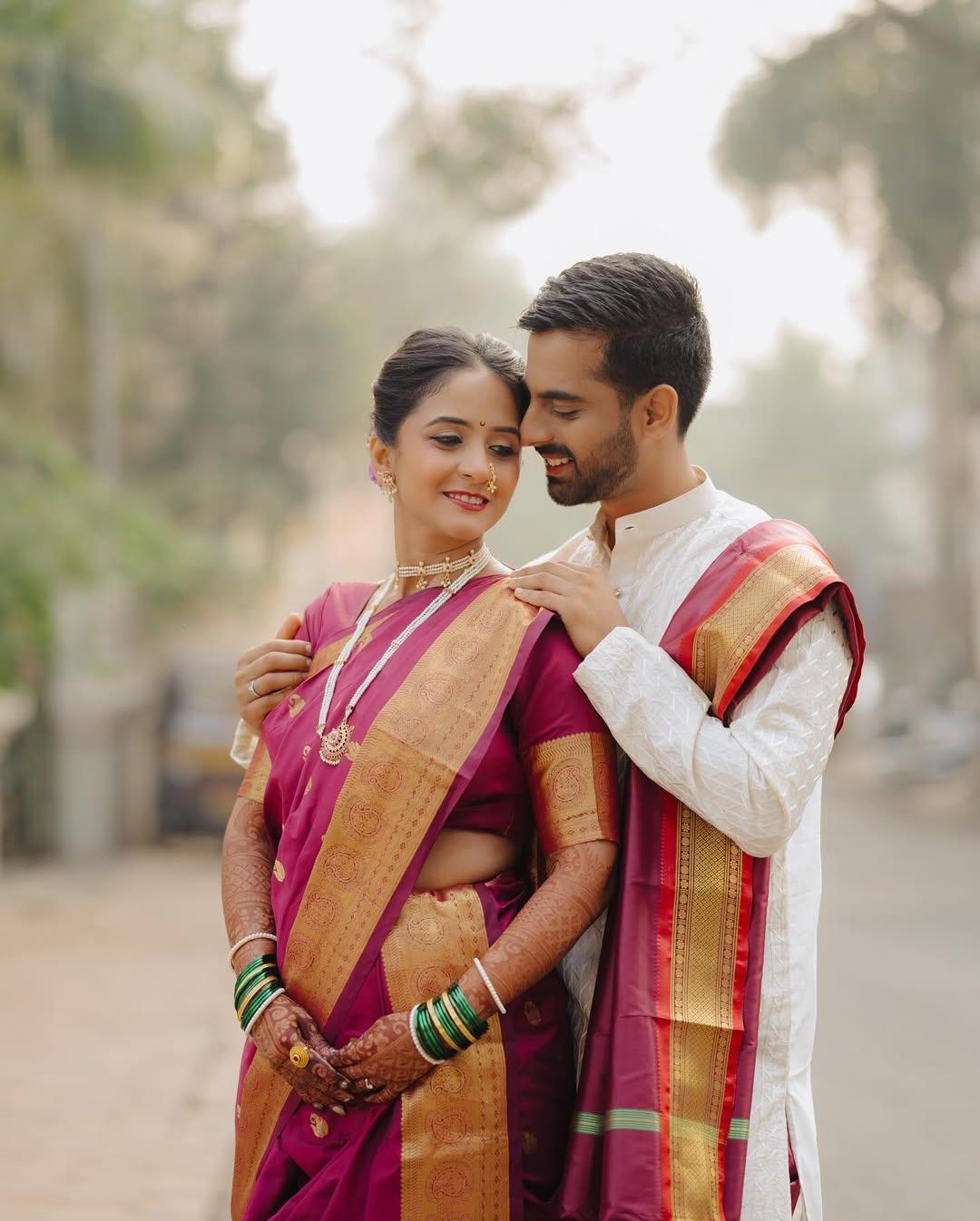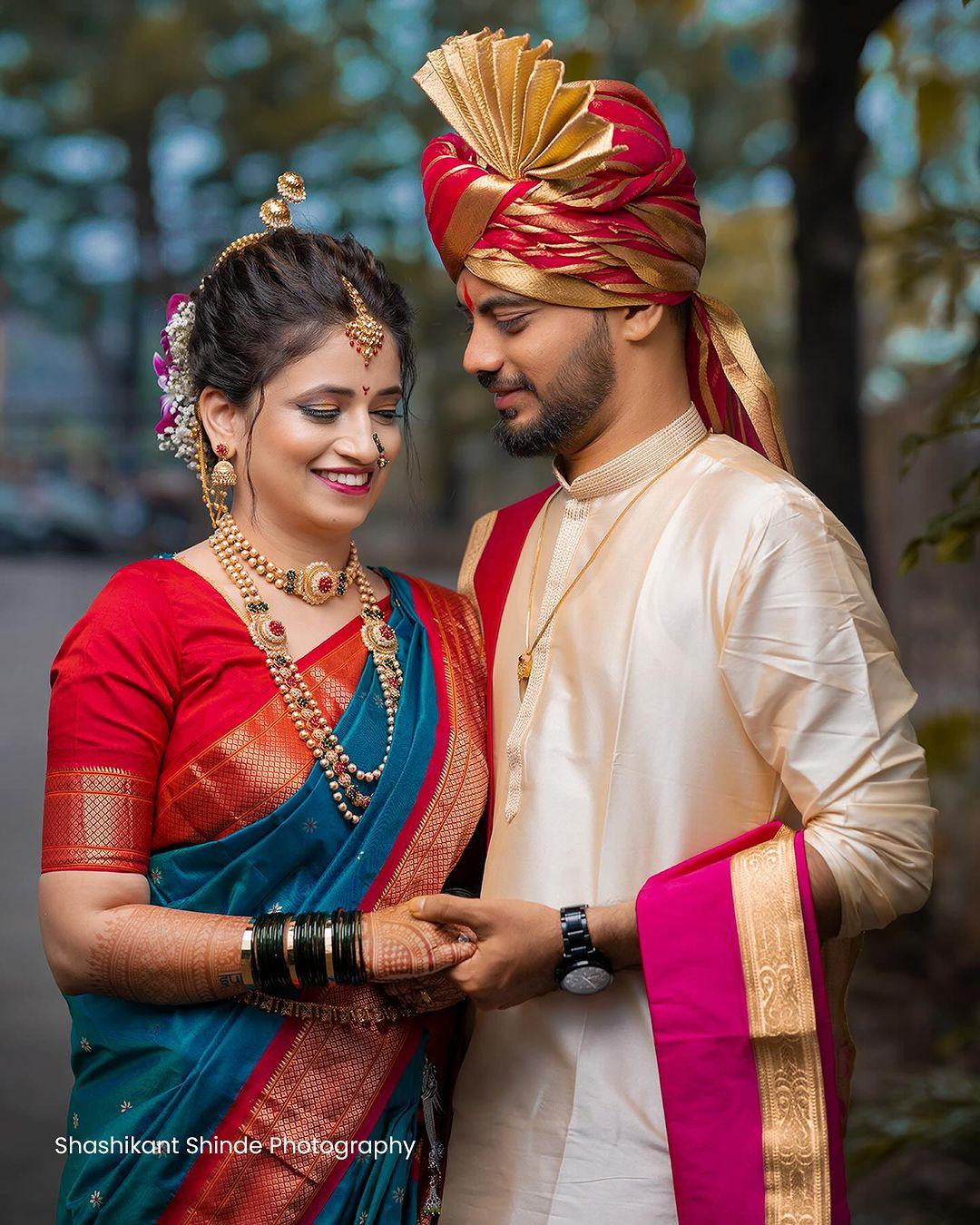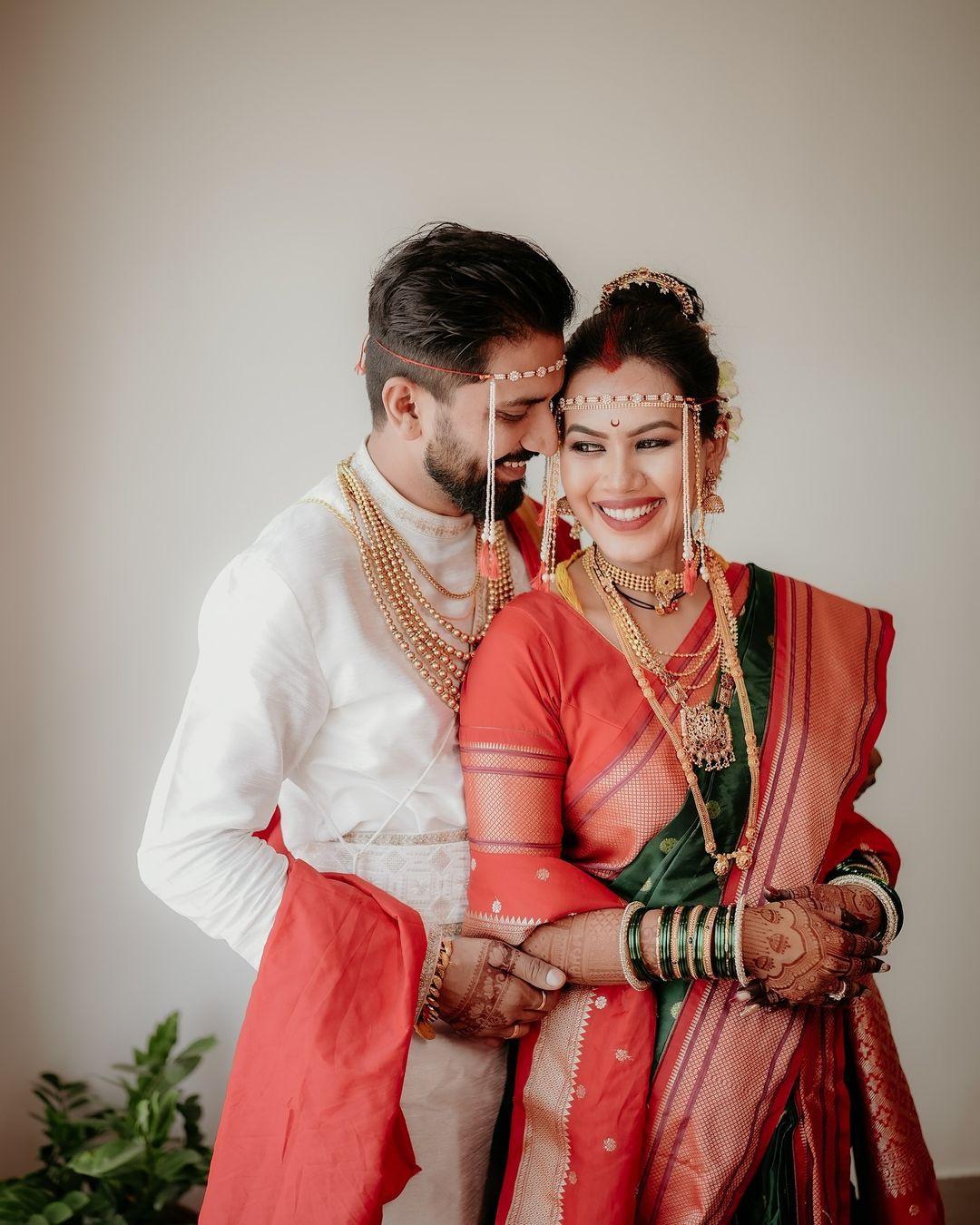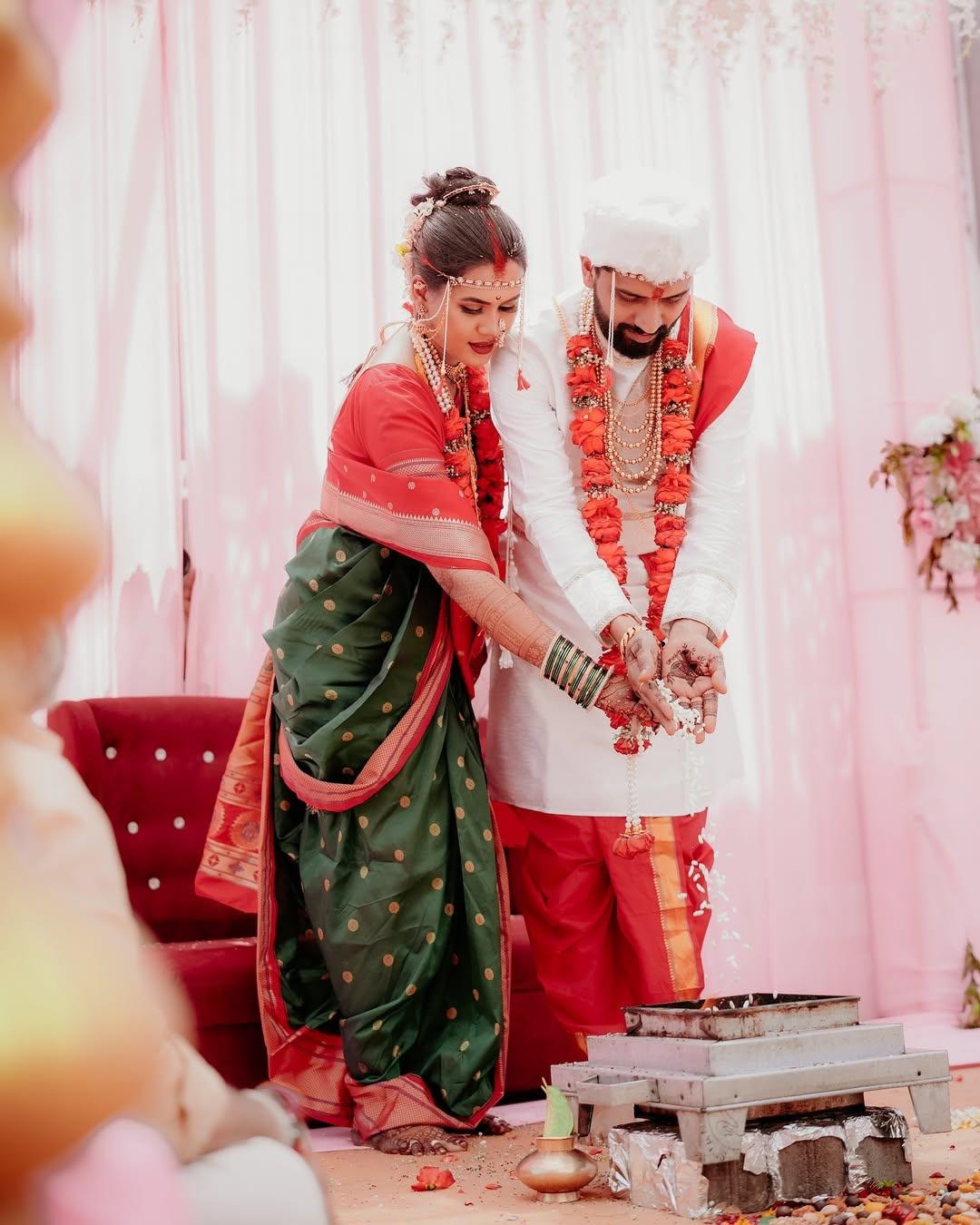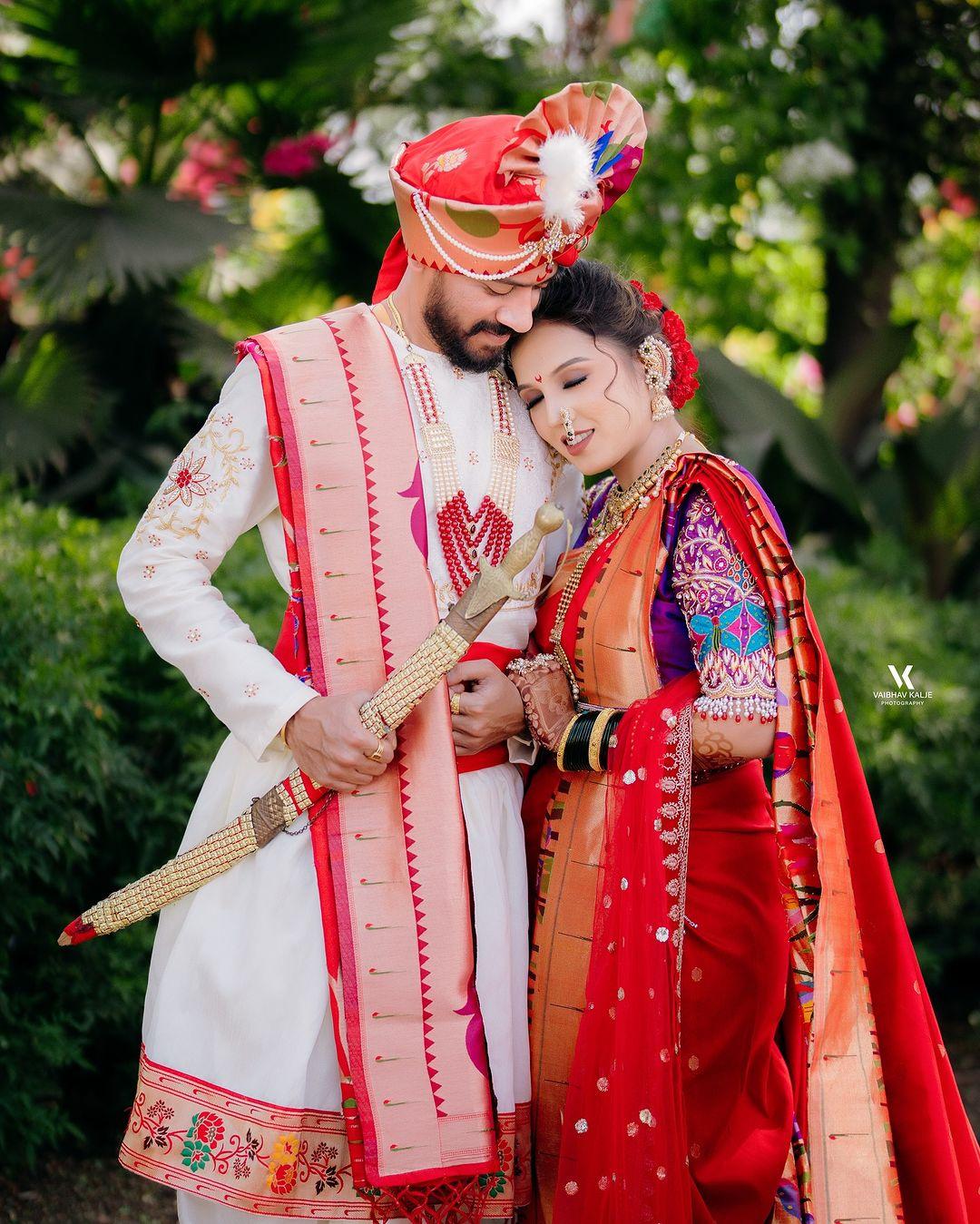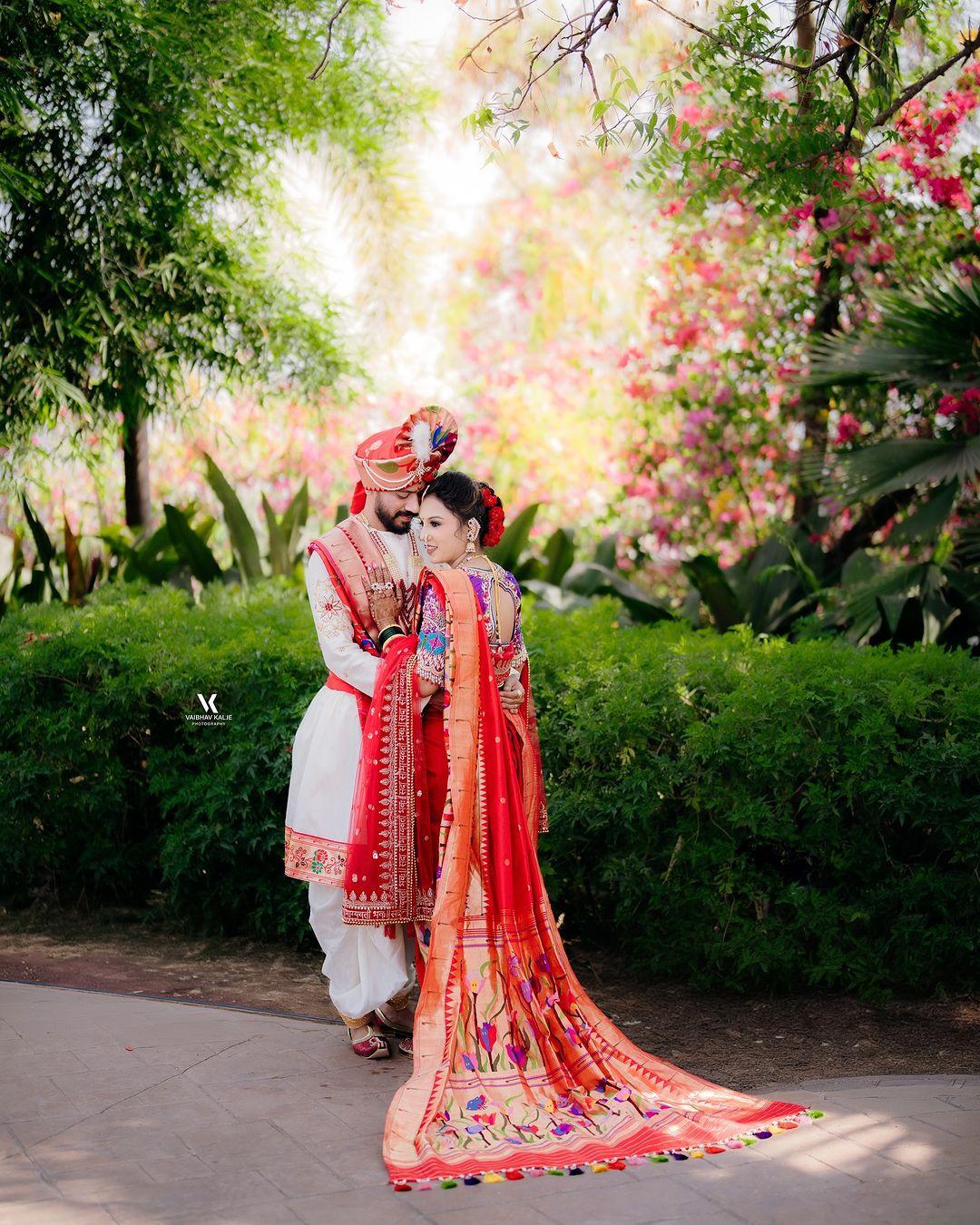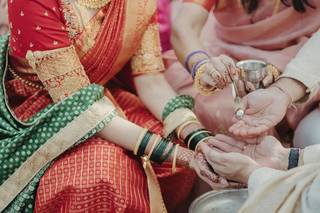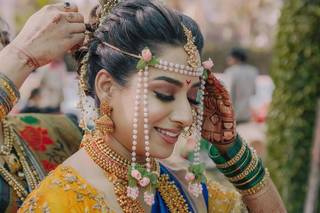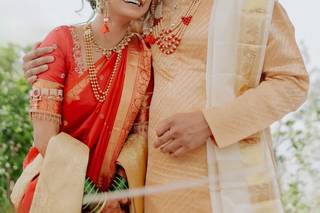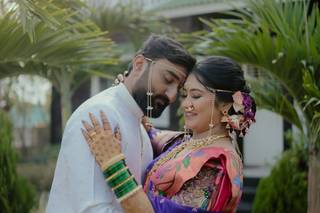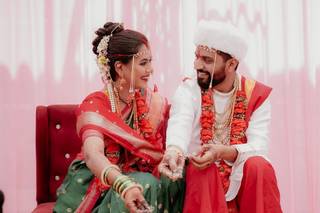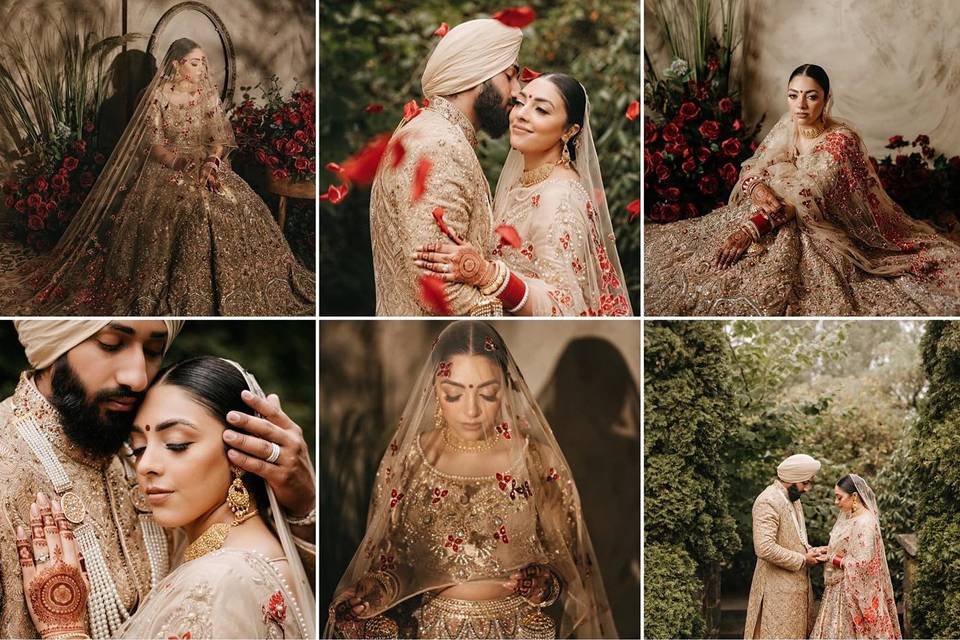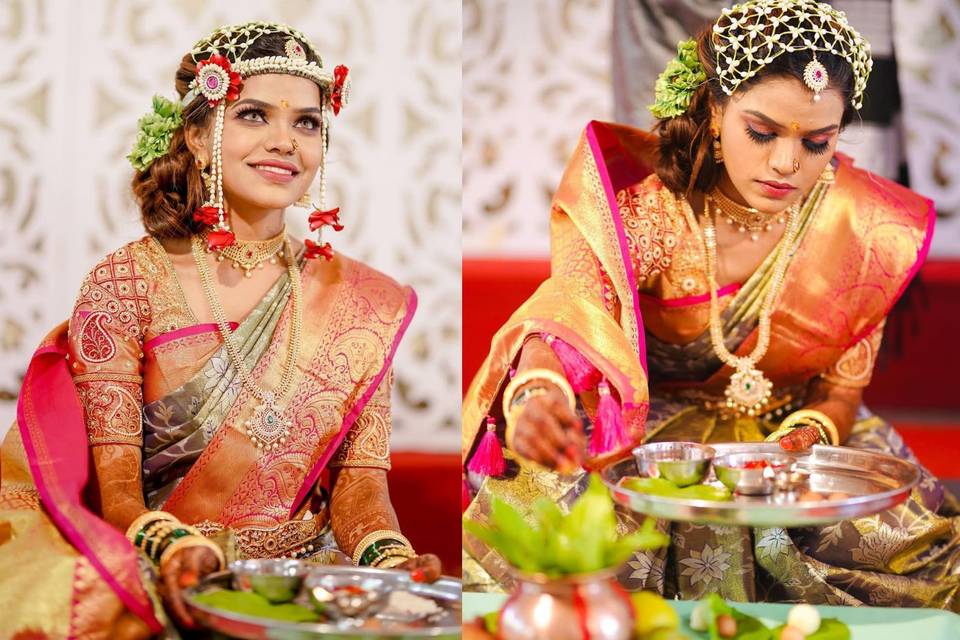Decoding Indian Weddings: Traditions of a Maratha Marriage
Discover the vibrant rituals, traditions, and attire of a Maratha wedding—unique and unforgettable!


Everyone has heard of the big Indian weddings that occur for many days. The festivities and religious rituals differ for every region and culture, and a Maratha marriage is no exception. Weddings in Maharashtra are synonymous with big fat Indian guest lists, with guests coming from all over the world and joining in on the celebrations. Despite the weeklong celebrations, a Maratha marriage is very simple. The two words that truly describe a Marathi marriage are minimalist and vibrant!
The bride dons a traditional Maharashtrian Nauvari saree in shades of green and yellow. Also, weddings happen during the daytime, as they believe it is the most auspicious time of the day! Here are all the pre-wedding, wedding and post-wedding traditions that make a Marathi wedding special and worth attending at least once in your life!
In this article:
1. Maratha Pre-wedding Rituals
3. Maratha Post-wedding Rituals
Delve deeper into the beautiful rituals and traditions of a Maratha wedding and explore its unique intricacies. Read on to learn more about it.
Best Wedding Planners in Maharashtra
Maratha Pre-wedding Rituals

Lagnaach Bedior
The first ritual after a Maratha marriage is fixed is Lagnaach Bedior. A priest matches the bride and groom's horoscopes and then fixes an auspicious day and time for the wedding ceremony.
Sakhar Puda
Sakhar Puda, or the ring ceremony, is held some days before the wedding day. The bride and groom's families gift clothes, sweets, and jewellery to the new additions to their families. After that, the couple exchanges engagement rings.
Muhurt Karane
After a Maratha wedding is fixed and Sakhar Puda is celebrated with full zeal and happiness, the ritual is Muhurt Karane. The wedding preparation is done for months, and the pre-wedding festivities are in full swing. For Muhurt Karane, five married women, known as the 'Suhasanies', are invited by the bride’s mother to come over on an auspicious day. They come together to grind Turmeric with an iron pestle, which will be used for later ceremonies, pulses and spices, and roll papads.
Rukhvat
After Muhurt Karane is the ritual of Rukhvat, which is part of Maratha pre-wedding festivities, shopping for all the wedding festivities comes after this, along with the Rukhvat ceremony, where the wedding trousseau, utensils, sweets, and other items are attractively exhibited.
Wedding Invitation
Lord Ganesha is an essential part of a Maratha wedding; therefore, the first wedding invitation is offered to him to seek his blessings. While the ceremony is quite small and can be organised at home, it is one of the most important rituals of a Marathi wedding.
Kelvan
Performed just a day or two before the wedding, the bride and groom's families offer puja to their deities and ask for blessings for a happy union for the couple. A feast for the families and close relatives follows the puja!
Halad Chadavane
The married women related to the bride and groom perform Halad Chadavane or Haldi on the wedding day. They put a turmeric paste with a mango leaf on the bride/groom’s forehead, shoulders, hands, knees, and feet.
Chura Ceremony
Like every Indian wedding, the Chura ceremony is also an important part of a Maratha wedding. Bangles symbolise one of the sixteen shringaars and are paramount to a bride. For a Maratha wedding, green is the most auspicious colour representing fertility and life, so the bangles the bride wears during this ritual are green.
Maratha Marriage Rituals

Punyavachan
Every Maratha marriage starts with a Ganesh puja. When the bride reaches the wedding venue, her parents ask all the elder relatives to bless her and her marriage with all the happiness in the world. In India, blessings from our elders are considered good luck, and no occasion is complete without them.
Ganpati and Devdevak Puja
While the Maratha wedding commences with a Ganpati Puja to bless the couple with an obstacle-free life, it is followed by a Kuldevta puja during the mandap, which can vary from family to family. After that, her parents escort the bride to the wedding venue, who will then ask the guests to bless their daughter at the Punyavachan.
Seemanpuja and Gurihar Puja
During Seemanpuja, the bride’s mother warmly greets the groom with Aarti and treats him upon arrival. The groom's feet are washed, tilak is applied on his forehead, Aarti is performed, and he is welcomed inside the wedding venue by the bride's mother. Following this is the Gurihar Pooja, where the bride, adorned in a traditional bright Paithani saree, seeks the blessings of Goddess Parvati for a prosperous life. During the same ceremony, the bride's maternal uncle presents her with money, which she then offers to Goddess Parvati.
Antarpat
Before the bride enters the mandap, the groom awaits her. An Antarpat or curtain is hung in front of him to block his view of the bride. The Antarpat is removed only once the bride is sitting exactly opposite him.
Sankalp
Sankalp is the Jaimala ceremony in a Maratha marriage, during which the bride and groom put a beautiful garland of flowers of their choice around each other’s necks in front of their friends and families. In turn, the friends and family shower the couple with flowers or whole rice. It signifies that they both have accepted each other as husband and wife.
Kanyaadan
In many cultures, Kanyaadan is considered the most important ritual. In this ritual, the father of the bride gives his daughter to the groom with his blessings. In return, the groom promises to love and cherish her forever.
Lajahoma
In this ritual, the groom repeats three mantras after the father of the bride, and the bride silently utters the fourth mantra. The bride’s parents then tie a turmeric thread on the couple’s forehead. The groom finishes this ritual by tying the Mangalsutra on the bride’s neck and sprinkling Sindoor on her forehead.
Saptapadhi
This is the ritual that completes a Maratha marriage. The bride and groom take seven wedding vows while encircling the holy fire. After this, they take blessings from everyone.
Karmasamapti
The final ritual of a Maratha wedding is Karmasamapti, where Laxmi Pujan is performed at the mandap after all the different ceremonies. The Puja is performed till the fire dies out, and the groom gives the bride a new name during this ritual. A fun addition to this is by the bride's brother, who twists the groom's ear playfully to remind him of his marital duties. The bride and groom touch everyone's feet in the end to take the blessings for their new chapter in life.
Maratha Post-wedding Rituals
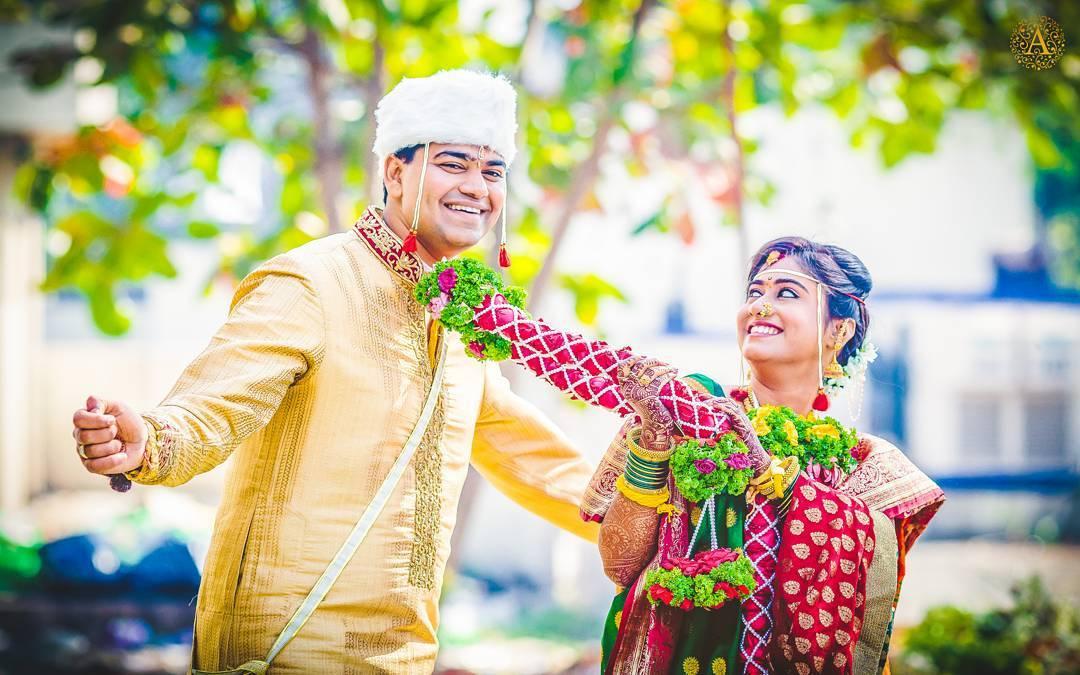
Varat
In a Maratha marriage, Varat is the ritual where the bride bids farewell to her family and leaves for her new house with her new family.
Grihapravesh
The groom’s family welcomes the newlywed couple. The groom's mother performs an aarti. The bride has to push a Kalash filled with rice down with her feet. The Kalash is then kept on the threshold of the house.
Reception
The celebrations end with a reception hosted by the groom’s family to welcome the bride into their family and bless the newlyweds. The bride’s family and all close relatives attend. Despite the different cultures, the ceremonies and rituals have the same significance.
Like every wedding, a Maratha marriage has many different rituals and is full of age-old ceremonies and festivities. These traditions are what distinguish the diverse cultures in India!
Want to make sure your wedding ceremonies are all perfect? Get in touch with our professional pandits today!
Decoding Indian Wedding Rituals in India:
1. Inside a Traditional Telegu Wedding
2. Royal Marwari Wedding Traditions
3. DIW: Manipuri Wedding Rituals

